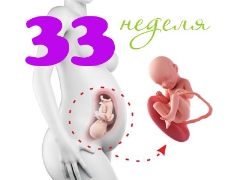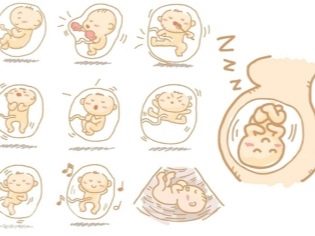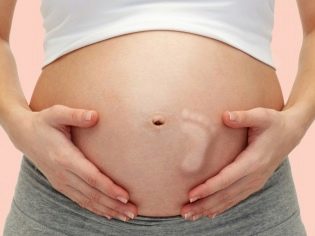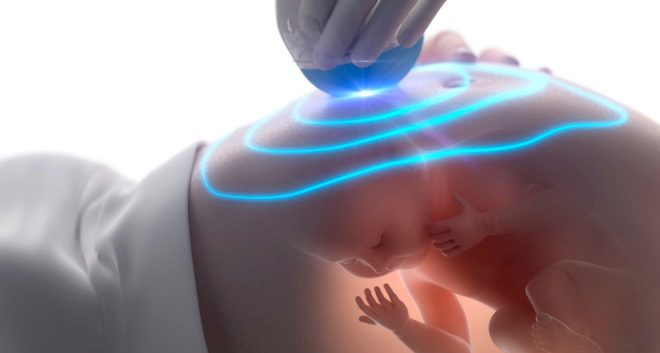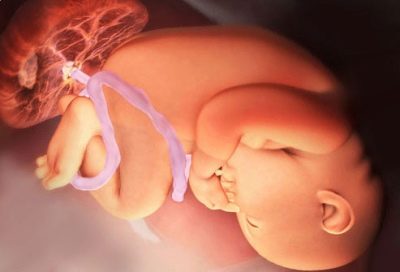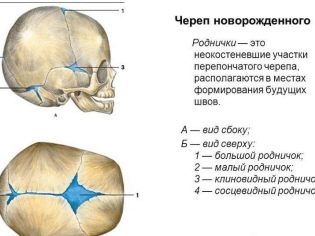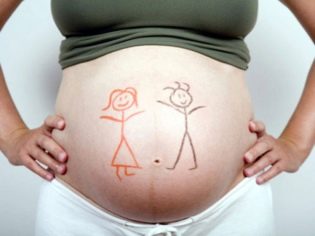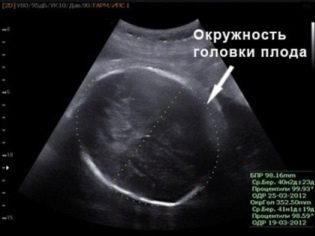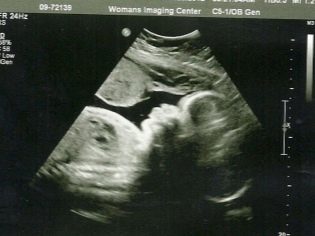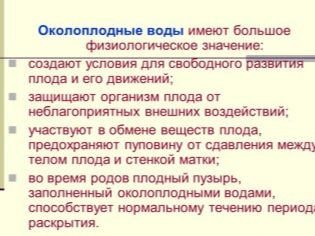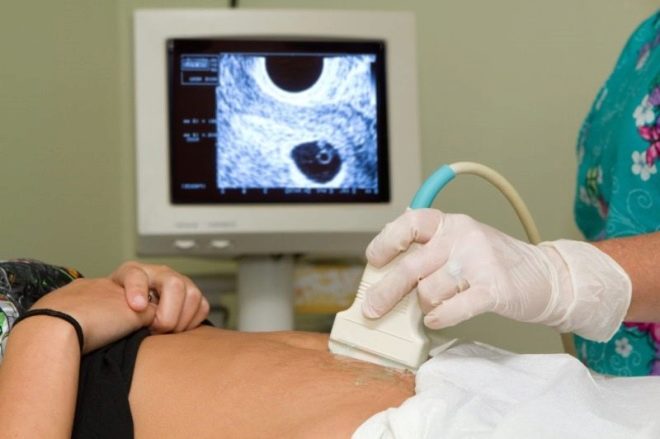Weight and other parameters of the fetus in the 33rd week of pregnancy
The final stage of intrauterine development of the baby is very important. The active growth of the child is accompanied by a change in its basic parameters of the body. One of these important clinical indicators, estimated at 33 weeks of gestation, is the weight of the fetus.
Features of the development of the baby in this period
33 week of pregnancy is already a kind of finish. By this time, the fetus is sufficiently formed. By this time, the formation of the basic structures of the nervous system was completed. The baby beats the heart, which is well defined using various auxiliary methods of research.
At 33-34 weeks of pregnancy the child is already beginning to actively interact with his mother. This is manifested in the fact that he reacts to all the emotions that a pregnant woman is experiencing.
Many mommies say that when they talked to their baby at this stage of pregnancy, they felt that their babies really hear them. This is manifested, as a rule, by the fact that the child begins to actively move in his mother's tummy or may even roll over.
With a healthy pregnancy, the risk of such a coup is minimal.
The enlarged uterus firmly holds the active baby from excessive turns. In this position, the child can only move a little, and also makes active movements with arms and legs.
The formed nervous system of the baby leads to the fact that his sensory analyzers begin to function gradually. This is well detected by volume ultrasound.
During such a diagnostic procedure, the baby may smile or "get angry" at the doctor who is conducting the examination. Some kids just dodge the sensor.
Some moms even note that during pregnancy, their babies reacted to a change in the smell of perfume. They determined this by the way the child actively moved when changing the daily used perfume water. Such an ability to react to sharp odors can be associated with the active work of nerve analyzers.
The activity of the nervous system leads to the fact that the baby begins to slowly form emotions. Experts believe that In this period of pregnancy, the child even “sees” dreams and may experience various emotional experiences.
Many of the systems of internal organs in the baby are already beginning to manifest by the 33rd week of pregnancy. Thus, the gastrointestinal tract, cardiovascular and immune systems gradually “wake up”. Slowly baby prepare for his birth.
At the 33rd week of pregnancy, the baby’s liver tissue begins to function gradually. This leads to the fact that the formation and accumulation of its own hemoglobin occurs. This important protein is necessary for the baby immediately after his birth.
Also at this stage of pregnancy, the baby has some changes in the structure of the musculoskeletal system. The bones that protect the baby’s brain are still quite soft. This is largely due to the fact that during his birth the child should not receive any injuries and injuries.
The tubular bones at the same time begin to thicken and harden.The length of the limbs also varies. Bones become longer and elongated. Specific changes in the child also occur in the lung tissue.
Light fetus is almost completely formed. However, their full functioning will begin only after the birth of the baby into the world.
Weight and other norms of fetal parameters
At 33 weeks of gestation, fetal size is already quite large They are determined during the ultrasound. The doctor assesses not only the weight and length of the body of the baby, but also conducts a study of the important structures of the child’s body.
For ease of evaluation of the obtained clinical indicators, ultrasound specialists use special tables. These medical documents are designed for each week of pregnancy. They contain the normal values of the main estimated parameters. Such a table, corresponding to the period of 33 weeks of pregnancy, is presented below:
Estimated parameter | Norm |
Torso length (cm) | 43-44 |
Body weight (in grams) | 2000-2100 |
These indicators are averaged. If the weight of the child does not "fall short" to the norm, then the expectant mother should not immediately panic.
It is possible that such a reaction is individual. Especially often it is found in miniature women.
In multiple pregnancies, the rates may also be different. In most cases, one of the babies grows somewhat faster than the other. This leads to the fact that during the ultrasound the body weight of each of the children is different. Average, The body weight of each of the twins at this stage of pregnancy is 1600-1800 kg.
At the time of the study, the specialist may also determine other clinical parameters. They are important in this period of intrauterine development.
One of such determined clinical parameters is biparietal size. Normally, its values at this time of fetal development are 7.7-9.1 cm.
It is also possible to estimate the size of the brain with the help of another clinical criterion, which is called the fronto-occipital size. Normally, this indicator is 9.8-11.6 cm. The head circumference of the baby at this gestational age is 28.9-33.3 cm.
During the study, the doctor may measure other, equally important clinical indicators. One of these is the abdominal circumference. Normal values of this indicator are 26.7-32.5 cm.
At this stage of pregnancy, the length of the seed is also necessarily evaluated. Thus, the normal length of the hips in a baby is an indicator equal to 5.8-6.8 cm. The bones of the shoulder along the length at this stage of pregnancy are 5.3-6.3 cm.
The specialist necessarily evaluates the structure and size of the placenta, as well as other fetal membranes. These structural elements are very important for the baby. Through them, the child receives all the necessary components required for his life and functioning.
Amount of amniotic fluid is also a very important clinical indicator. If the amniotic fluid becomes too much, this will lead to the development of pathology dangerous for the child. This condition can be determined by determining the amniotic fluid index.
If the baby is located in the uterus correctly and does not turn away from the ultrasound sensor, then the doctor will also be able to determine his gender. Of course, sex determination is carried out much earlier.
But quite often in medical practice there are cases when the gender of a baby is determined at the first ultrasound examination conducted by a woman is incorrect. In this case, for a period of 33 weeks, it is much easier for a specialist to “see” the sex of the child.
Also during the study, the doctor will definitely evaluate the amount of amniotic fluid. Any changes in this indicator can lead to the appearance of various pathologies. In such cases it may even be necessary for the expectant mother to be hospitalized in the hospital for the necessary treatment. If the situation is dangerous, then the woman can be in the hospital directly to the birth.
If during the study the doctor reveals any abnormalities, he will definitely recommend the expectant mother to undergo a second ultrasound. Usually it is performed immediately before birth.
Such a re-examination is necessary so that doctors can decide on the choice of the necessary tactics of obstetrics. If the identified pathologies are serious enough, the possibility of vaginal delivery is reduced. In such a situation, the doctor may advise the expectant mother to have a cesarean section.
About what should be the weight of the fetus at 33 weeks of gestation, see the following video.
